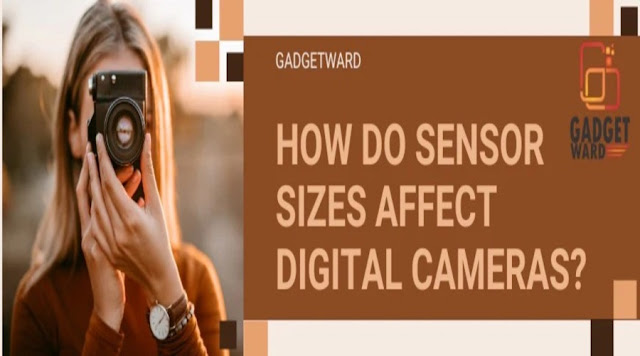HOW DO SENSOR SIZES AFFECT DIGITAL CAMERAS?
How Sensor Size Affects Data Capture
More sensors mean a larger sensor. More sensors mean capturing more information, light, colors, and other elements that go into creating an image, which is then translated into numbers before being displayed back on the screen. Therefore, it makes sense why people would gravitate towards the largest sensor available, but there are other factors to take into account.
Crop Factor
There is a different "crop factor" for every sensor size. This metric measures how much of a photo is cropped off when compared to a typical full-frame photograph taken with the same setup and lens. For instance, if you used a full-frame sensor to photograph a building, you would see the entire structure. If you take the same picture with an APS-C sensor, the image will appear "zoomed in" and you won't be able to see the outer 25% of the structure because the sensor doesn't extend that far.
Full Frame
Professionals choose this digital sensor because it precisely matches the size of the negatives being used, capturing the image as it was taken. There is no crop factor to consider, as there would be with smaller sensors. To get started, entry-level options could come at quite inexpensive prices.
APS-C
The most popular sensor size for entry-level DSLR cameras is often referred to as the APS-C sensor. Crop factors typically range between 1.5 and 1.7x, or about 75% of a full-frame image. It is a cost-effective option for photographs that can be cropped, like those of animals or sporting events, because more affordable lenses are available that are compatible with the sensor size. APS-C cameras will cost roughly $1,500 in Australia. Because lenses are frequently priced according to how much glass is in them, the lenses are more reasonably priced.
Micro Four Thirds
It is also referred to as Four Thirds and is known for its use of a 4:3 image aspect ratio and a sensor that is about 1/4 the size of a full-frame sensor. These are excellent for distant images that, when taken with a 2x crop factor, appear "zoomed in."
For the same reason that you can use a 100mm lens and have it appear as though it were a 200mm on a full-frame, the Four Thirds also provides a more affordable alternative to a full-frame when it comes to taking pictures of sports and wildlife. Nevertheless, at the expense of less detail and dynamic range. The larger the sensor, the more detail, light, and colors can now be caught. Comparing the MFT sensor to full-frame sensors, the degradation is fairly obvious.
Being the most portable makes it convenient for travel and trekking excursions, making it ideal for world travelers. Price starts at about $600, however, camera lenses are the most reasonably priced component.
Final Word
You should be aware that no matter what you purchase, a better version is either already available or is soon to be released. After selling cameras to photographers of different skill levels for some time, one can easily identify trends in the models that customers ultimately select, but what's more crucial to look at is what each manufacturer equips with their preferred sensor sizes. It would be simple to say that anything less than a full-frame digital camera is a compromise. Most importantly, though, familiarize yourself with the full range of camera systems, from the camera body to the lenses and, of course, the sensor sizes.
A lot can alter with a little adjustment to one of these. Understanding sensor sizes can help you choose a camera and appreciate the advantages it will give you in terms of image capturing.
You may also like:
A LOOK AT DIFFERENT KINDS OF CAMERA LENSES
WHY INVEST IN AN INTERCHANGEABLE LENS CAMERA?

Comments
Post a Comment